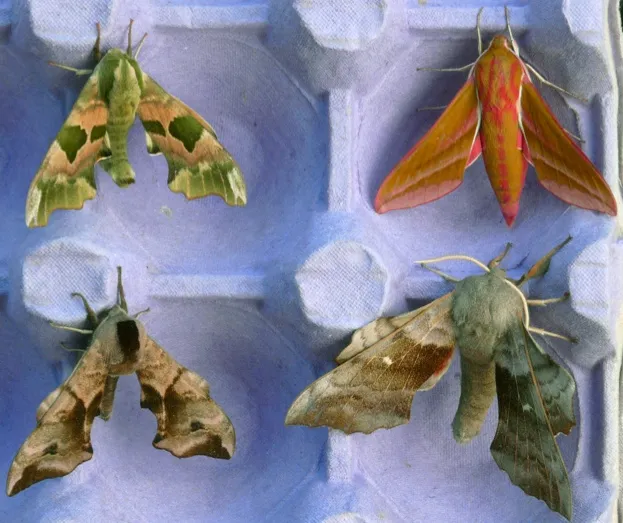Every summer BBC Wildlife is deluged with emails and phone calls from British readers who think they have spotted a hummingbird in their garden. The creature in question always turns out to be a moth. More specifically, a hummingbird hawkmoth.
This amazing insect flies during the day and hovers over flowers with hummingbird-like precision by beating its wings 80 times per second. It has a 5–6cm wingspan and a long proboscis for feeding from deep, tube-shaped flowers.
It’s easy to see why people think they have spotted a hummingbird – but real hummingbirds live only in the Americas and have never been recorded in the wild in Europe.
In recent years there has been a large increase in the numbers of hummingbird hawkmoths, and other dazzling hawkmoth species, seen in the UK. Now Butterfly Conservation wants to track their spread. It’s annual Moth Night project will this year focus on the striking insects.
Butterfly Conservation is asking the public to look out for hawkmoths throughout Moth Night – which despite its name actually lasts several consecutive nights, from Thursday 9 to Saturday 11 June.
Richard Fox of Butterfly Conservation said: “Hawkmoths are some of the largest, fastest and most glamorous moths found in the UK. These moths have the wow factor.”

One species likely to be sighted is the elephant hawkmoth, a salmon-pink and olive-green moth that earned its name due to the trunk-like snout of its caterpillar.
The pine hawkmoth, which thrives on conifer trees, has also spread across the UK in recent years. It has benefited from new conifer plantations and warmer weather conditions.
Some hawkmoths can be tricky to spot as they have mastered the art of mimicry. The broad-bordered and narrow-bordered hawkmoths closely resemble bumblebees, the difference lying in their antennae, agility and hum.
Normally the hummingbird hawkmoth is only a summer visitor to Britain, from mainland Europe. But Butterfly Conservation experts say that there are now signs the species is trying to gain a permanent foothold here. Some of these hawkmoths have been found overwintering in south-west England, finding shelter in warm locations such as greenhouses.
Butterfly Conservation hopes that sightings from the public will help to add to our knowledge. You can record them on the charity’s Moth Night website.
“Attend a public event during Moth Night to meet these amazing insects, or see if you can track them down on your own patch,” suggests Richard Fox.
Main image: hummingbird hawk-moth. © Bob Eade